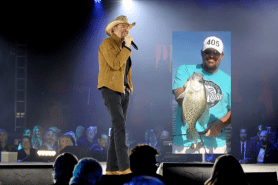

Corpus Christi Harte Research Institute (HRI) for Gulf of Mexico Studies and Coastal Conservation Association (CCA) are proud to announce the launch of a cooperative effort called ReleaSense, to promote and enhance the traditional role of anglers as leaders in saltwater fisheries conservation. ReleaSense is designed to empower anglers as stewards of the resource by bringing together industry, conservation organizations and fisheries scientists to develop the best, science-based catch-and-release practices.
“Anglers long ago realized that there is great satisfaction in keeping what you want to eat, but even more satisfaction in releasing the rest,” said Dr. Greg Stunz, Director, Center for Sportfish Science and Conservation at HRI. “Of course, for catch and release to work it is implied that those fish have a high chance for survival, and that is the idea behind ReleaSense.”
ReleaSense will be an evolving online resource of instructional videos and scientific research designed to improve the ability of saltwater anglers to increase the survival rates of released fish, from shallow-water species like speckled trout to deep-dwellers like grouper and snapper.
To increase marine fish survival after release, ReleaSense will focus a wide variety of techniques, including descending devices, venting tools, circle hooks and handling practices, and will provide step-by-step instructions for even novice anglers to employ efficiently. For anglers fishing from shore to those on boats to those participating in tournaments, the goal of ReleaSense is to fish today with tomorrow in mind.
“When anglers are adhering to the rules and regulations, there is absolutely nothing wrong with keeping fish to take home – it’s an important part of the angling experience,” said Patrick Murray, President of CCA. “But catch and release is a significant component of making sure that the marine resources that we value and work so hard to conserve are in the best possible shape now and for future generations. ReleaSense is an exciting partnership that creates another tool for anglers to ensure healthy and sustainable populations of fish in the future.”









